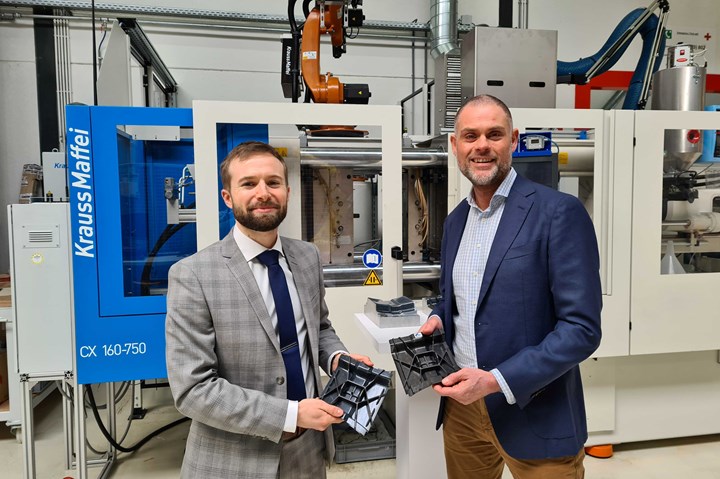Safran joins the ThermoPlastic composites Research Center
The aerospace group joins as part of the ongoing initiative to decarbonize aviation. Safran believes thermoplastic technology development acceleration is a key target to meet this goal.

Photo Credit: TPRC
Safran (Paris, France) has joined the ThermoPlastic composites Research Center (TPRC, Enschede, Netherlands), following FACC (Ried im Innkreis, Austria) and several others in the aerospace industry. TPRC focuses on enabling the use of thermoplastics in large-volume applications, as well as promoting the widespread adoption of these lightweight materials through fundamental knowledge development.
From high-performance engines to the development of lighter equipment, involving the use of electrical energy for non-propulsive systems or engine hybridization and more, Safran’s current research activities are intensely focused on the global carbon-neutral aviation goal while also strengthening its theoretical and application knowledge of these materials.
What is happening with composite materials in this area? Safran points to their application in lightening LEAP engine structures, reducing fuel consumption by 15% from that of the CFM-56 engines. Moreover, as part of the CFM RISE program, Safran intends to reduce fuel consumption by more than 20%, as well as CO2 emissions from future propulsion units. The use of thermoplastic matrix composites should therefore expand the areas of application for composites and reduce the mass of assemblies, by working on welding, Safran notes. Moreover, the use of thermoplastic resins, which enable the recycling of material scraps and end-of-life (EOL) parts, will further reduce the carbon footprint of the group’s product manufacturing.
“Joining the TPRC will create synergies and accelerate Safran’s composite technology development,” says Jean-Pierre Poitevin, director of Safran Composites. “Safran has had extensive and fruitful experience with composite materials. Indeed, many composite parts based majorly on thermoset resins are already in production. The LEAP engine’s 3D-woven fan blades are perfect examples of Safran’s spearhead position on these composite technologies. However, the R&T effort on the composites material is still a very high priority on Safran’s ‘decarbonation strategy.’” He adds that developing thermoplastic-based composites and related technologies is already a part of the company’s composites roadmap with existing maturation works.
“Safran has been a valuable partner of the TPRC since they joined the COMPeTE project on overmolding of thermoplastic composites in 2015,” Sebastiaan Wijskamp, technical director of the TPRC, adds. “With Safran now becoming a full member of the TPRC, we can jointly work on all topics of our research roadmap, amongst which fiber placement, out-of-autoclave [OOA] processing, welding, stamp forming and recycling. The TPRC consortium is becoming stronger with the participation of Safran, and together we hope to meet the current need for lightweight design for more sustainable transportation in the future.”
Related Content
-
“Structured air” TPS safeguards composite structures
Powered by an 85% air/15% pure polyimide aerogel, Blueshift’s novel material system protects structures during transient thermal events from -200°C to beyond 2400°C for rockets, battery boxes and more.
-
The next-generation single-aisle: Implications for the composites industry
While the world continues to wait for new single-aisle program announcements from Airbus and Boeing, it’s clear composites will play a role in their fabrication. But in what ways, and what capacity?
-
First Airbus A350 crash confirmed in Haneda
Shortly after touch-down, a JAL A350-900 aircraft recently collided with a De Havilland Canada Dash 8. Exact circumstances are still unknown.
















